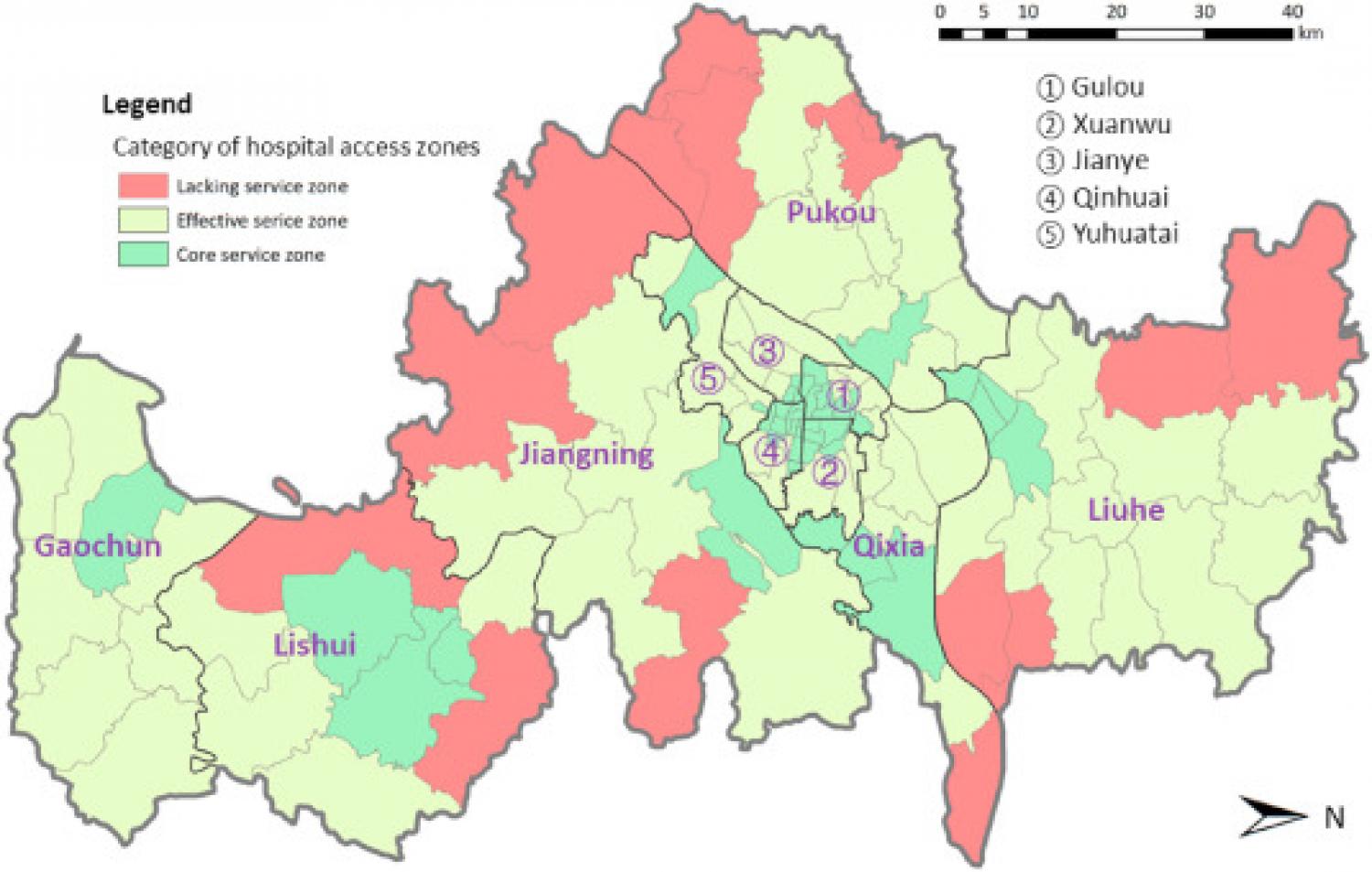
Background: With the rapid demographic shift towards an ageing society, it is a concerted effort to facilitate elderly's access to healthcare in order to maintain and improve their quality of life. In China, hospital care services dominate the healthcare market, which requires a better understanding of accessibility to hospitals in order to rationally allocate resources in spatial and land use planning. However, little attention has been paid to analysing the geographical accessibility to hospitals specific to the elderly population. Objectives: The objective of this study is to examine the spatial access to multi-tier – primary, secondary, and tertiary – hospital care services for older adults with an explicit focus on equity – the (un)even distribution of geographical accessibility. Methods: Building on the revealed travel patterns of elderly's medical trips, this study measures the level of accessibility at the sub-district level and assesses the inter- and intra-district disparities in Nanjing, China. To this end, we draw on the city's GIS database and the 2015 Nanjing Travel Survey. A two-step floating catchment area method was utilised to measure accessibility and the Gini coefficient was applied to show inequity. Results: It is found that spatial distribution plays a significant role in the accessibility to hospital services. Upper-tier hospitals are more aggregated and thus more unevenly accessible than the lower-tiers. In addition, accessibility to different tiers of hospitals varies greatly throughout the city, with pockets of deprived access identified on the outskirts. Imbalance and inequality of access to hospitals are also present within districts, displaying an increasing trend from the city centre to periphery. Conclusions: These empirical findings provide insights for health interventions in order to improve equitable access and rational allocation of health resources. This paper also bears relevance for strategically advancing the hierarchical healthcare systems in China from a geographical perspective.
